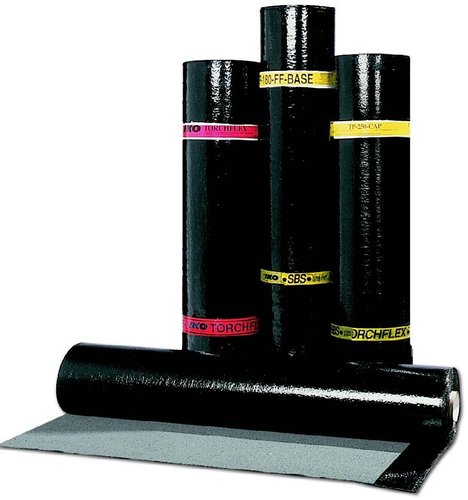What is Flat Roofing?
July 17th, 2012 When your roof starts to leak, it’s time to pull out the ladder and get to work or call a professional to do some repairs. Any novice should know that roofing is not a simple procedure and not only are there many different categories of roof, there are also numerous subcategories. In this article, we’re going to focus on what is flat roofing, one of the most common forms of roof category. Unfortunately, there are at least 20 different kinds of flat roofing materials and literally hundreds of brands that manufacture these materials. More importantly, there are at least 3 basic subcategories of flat roofing that include built-up flat roofs, single ply flat roofs, or spray-on/paint-on flat roofs. So, before you endeavour to repair your roof yourself, you should be sure to become acquainted with the types of materials and style of roof you are working on. Still, for best results, nothing compares to a well-experienced professional when it comes to repairing or replacing a roof.
When your roof starts to leak, it’s time to pull out the ladder and get to work or call a professional to do some repairs. Any novice should know that roofing is not a simple procedure and not only are there many different categories of roof, there are also numerous subcategories. In this article, we’re going to focus on what is flat roofing, one of the most common forms of roof category. Unfortunately, there are at least 20 different kinds of flat roofing materials and literally hundreds of brands that manufacture these materials. More importantly, there are at least 3 basic subcategories of flat roofing that include built-up flat roofs, single ply flat roofs, or spray-on/paint-on flat roofs. So, before you endeavour to repair your roof yourself, you should be sure to become acquainted with the types of materials and style of roof you are working on. Still, for best results, nothing compares to a well-experienced professional when it comes to repairing or replacing a roof.
Built-up flat roofing is a type of roof that is compiled of many layers, usually of tar-saturated paper, liquid tar, or asphalt. It is clear to see from the name of this type of roof that you will be building on layers of a roof, but the home improvement enthusiast should be careful to understand that the membranes of a built-up flat roof may be constructed from many different materials. As such, it is always best to work with a professional to get the best possible roof repair or replacement. Layers on a built-up flat roof are added on top of each other, usually in alternating directions and covered with gravel to protect the roof from UV rays.
Single ply roofing is exactly what the name suggests. Rather than having many layers as in the built-up roof, single ply flat roofing is just one layer of roofing material that serves as both waterproofing and weathering surface. Single ply roofing membranes are considerably thinner than built-up roofs, but don’t be fooled, the basics of installation are equally as complicated. Single ply roofing is usually made up of EPDM rubber roofing, PV roofing, and/or TPO roofing materials. These roofs are installed either by adhering them to the insulation of fibre below the roof or by mechanically attaching the materials to the roof deck.
Finally, spray-on or paint-on roofing involves applying liquid materials to flat roofing systems. The most common forms of spray-on flat roofing systems are spray-foam or SPF roof coatings. Spray foam roofing requires 2 stages of application where insulation is sprayed directly on the roof top. This foam is later coated with an acrylic or urethane coating and a final layer of crushed stones or sand which provide UV protection. Alternatively, SPF roof coatings are designed for an existing roof and can extend the lifespan of your roof by up to 15 years. Furthermore, these flat roofing coatings may provide extra waterproofing for your current roof, although not all coatings are waterproofing products. Because of the vast array of roofing materials and styles, it is always advisable to consult a professional before engaging in flat roofing repairs.
Please contact Vancouver roofer to learn more about Flat Roofing




